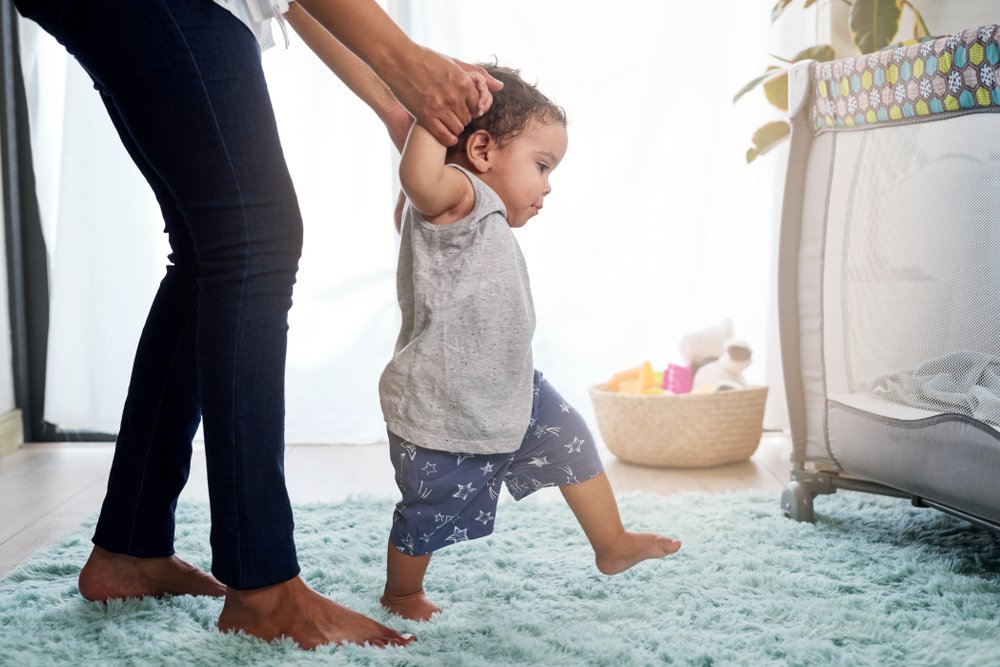Key points:
- Babies need to acquire key skills such as head control, sitting, rolling over and standing up before they can start walking without support.
- Co-ordination, balance and confidence are essential for babies to take their first steps and these skills usually appear between 9-10 months and are mastered by 15-18 months.
- Indicators that your baby is about to start walking include rolling over, crab-walking, dragging, and climbing the stairs on hands and knees. Activities such as sitting down and standing up, and walking with support can help strengthen muscles and develop coordination.
- Once a baby starts walking without support, it’s important to secure the home by removing sharp corners, loose furniture and potentially dangerous objects.
Before they learn how to walk, your baby must acquire many skills that will allow them to enter this new stage in life. Maybe you don’t know this, but all the strength they have gained by controlling their head, sitting down, rolling over, and standing up is essential to the development of the skill of walking without support.
Also, being able to take the first steps requires a lot of coordination, balance, and confidence. Those skills start to appear at certain age, but they take several months to consolidate. The American Association of Pediatrics estimates that most babies start walking around 9-10 months, but they master this skill until they are 15-18 months old. So, it’s normal if your little one needs a few months before they are able to walk without any help.
There are different indicators that tell you that your baby is about to start walking. Some of them are rolling over, crab-walking, dragging, climbing the stairs on hands and knees, etc. When you identify these behaviors, you can do these activities to strengthen your baby’s muscles even more and develop their coordination. Here are some recommendations:
- Stay standing up
- Walking with support or by leaning on furniture
- Sitting down and standing up
- Try climbing the stairs
- Climbing things
- Kicking a ball
- Jumping
While practicing these activities or how to take their first steps, allow your baby to be barefoot. This will prevent them from slipping while walking on different surfaces. But if they are practicing outside, we recommend they use comfortable shoes that are their size.
Also, it’s important to note that, when your baby starts walking without support, they’ll move faster than expected! So, it will be necessary to take the next security measures at home:
- Remove tables with sharp corners
- Put away furniture or objects that can fall easily
- Remove or hide cables with which your baby can stumble
- Install security doors at restricted areas or staircases
This way, your baby will be able to practice without the risk of dangerous tumbles or falls. However, falling down will be a normal part of the learning process. Your little one will fail sometimes, but they’ll learn to stand up and try again. Little by little, you’ll see them go from cruising along the furniture to taking their first steps.
Lastly, remember to be patient if your baby is scared or doesn’t feel confident enough to let go while you help them walk. You can encourage them by showing them their favorite toy, or by offering a push-toy, like a shopping cart or toy car. Practicing will help them gain more confidence and feel safe enough to try walking alone.








